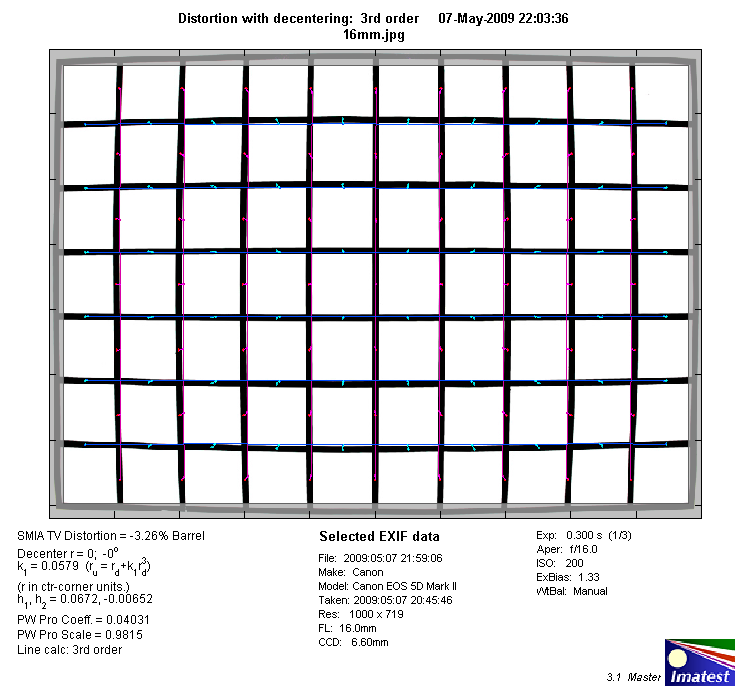|
Canon EF 16-35mm f/2.8 USM L II (full format) - Review / Test Report - Analysis |
|
Lens Reviews -
Canon EOS (Full Format)
|
|
Page 2 of 3

Distortion
Ultra-wide zoom lenses tend to suffer from rather hefty image distortion and that's also true for the EF 16-35mm L. At 16mm it produces a strong degree of barrel distortion which eases the further you zoom towards the long end. At 20mm the situation is already improved (1.6%) and there's only a minor bit left at 26mm (a bit wavy though) before changing to mild pincushion distortion at 35mm. So this characteristic is nothing special but not bad either here.
|
Move the mouse cursor over the focal length text marks below to observe the respective distortion
|
| 16mm |
20mm |
26mm |
35mm |
|

|
Vignetting
The amount of vignetting is rather extreme (2.8EV) at 16mm @ f/2.8 although most of the action occurs in the very out-most corners as you can observe in the sample image below. Stopping down to f/4 improves the problem but you should really go for f/5.6 and beyond to tame it to an acceptable degree in critical situations. The problem is still rather bad at longer focal lengths & wide-open aperture but most of the corner shading is acceptable by f/4 already. You can argue that it behaves a little better than the EF 17-40mm f/4 USM L at the same aperture settings.

Here're some visuals at max. aperture:
16mm @ f/2.8:

|
35mm @ f/2.8:

|
MTF (resolution)
The resolution characteristic varies significantly along the zoom range but it's generally on a very high level for such a lens (although not stellar in absolute terms). Typical for this lens class the center performance is very good to excellent at all tested focal lengths and aperture setting (up to f/11) and even the border quality is decent straight from f/2.8. The main problem is the generally poor corner performance at f/2.8 but you can surely argue that this is of rather limited interest for the vast majority of real life situations. The good news is that the corner quality improves quite dramatically when stopping down and it leaves little to be desired from f/5.6 onwards. The sweet range of the lens is between the 20-26mm whereas the weakest spot is the 35mm setting. There's some field curvature at 16mm and 20mm, less so beyond.
Please note that the MTF results are not directly comparable across the different systems!
Below is a simplified summary of the formal findings. The chart shows line widths per picture height (LW/PH) which can be taken as a measure for sharpness.
If you want to know more about the MTF50 figures you may check out the corresponding Imatest Explanations
Chromatic Aberrations (CAs)
Lateral chromatic aberrations (color shadows at harsh contrast transitions) are unusually well controlled for such a lens. Even the peak (@ 16mm) stays below 1.5px on the average at the image borders and it's usually less than 1px from 20mm onwards. Canon did a good job here for sure.
_

|